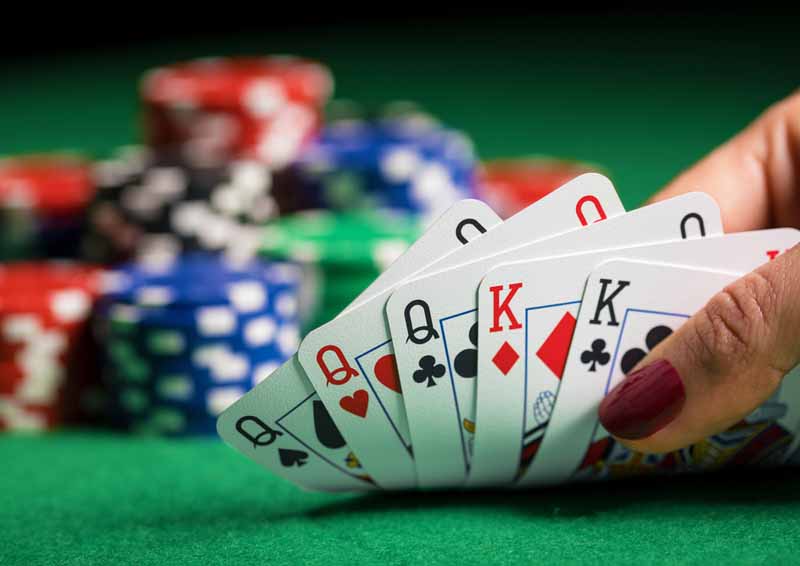Las Vegas casinos in the 1960’s and 70s started enforcing shoe games in their casino games. The concept was to inhibit card counters by imposing them to count through various decks in each shoe. Casinos speculated that through shoe blackjack tables, their card counting concern was solved. However, card counters hardly regulated their methods and other techniques like shuffle tracking were also born.
Blackjack: Shuffle Tracking
Shuffle tracking means tracing of particular cards or a succession of cards through various shuffles. Shuffle trackers oversee where 10s and face cards (known as high cards) are the entire preceding rounds.
Similar to card counting, the objective is to bet more when the shoe is sufficient with high cards. Shuffle tracking though, has higher efficacy than counting when used properly.
This technique, however, is also very challenging to utilize because you have to identify an advanced approach other than card counting.
The elemental concept behind shuffle tracking is that shuffles are not done by chance and that after a shuffle, you can still track certain cards.
You might think that dealers can instead opt out of shuffle trackers and just do extra jumble to make decks more random. Many casinos, though, despise the idea of dealers consuming too much time with shuffles, due to the fact that this delays the game thus decreasing profits.
Tracking Cards on Shuffles for Predicted Outlays
Blackjack dealers ordinarily use a “zero shuffle”, where cards are distributed into stacks, with the shuffling solely being done between the piles (i.e., the dealer snag two piles then riffles them). Meaning that the ace of hearts, for instance, will most likely be in only one or two sections of the shuffled shoe.
Card counting is being considered because the objective is to continue to monitor the count in various discard segments. To begin this explanation, let’s take a look at the point values designated in the Hi-Lo counting method.
- 2 through 6 = +1
- 7 through 9 = 0
- 10 through ace = -1
In shuffle tracking, you can utilize the alternative card counting systems. The Hi-Lo however, is a prominent counting technique and comes in handy.

High and Low Cards Prediction through Shuffle Tracking
You probably know, high cards benefit the player by enhancing their likelihood of getting a natural blackjack payout. This upper hand develops from the fact that players get either a 3:2 or 6:5 bonus with a natural.
Concurrently, low cards diminish the dealer’s chance of breaking out the moment they attempt to reach a hard 17. Anything that boosts the dealer’s odds of gaining victory is detrimental for players.
The proposition is to generate higher bets when the shoe is abundant in aces and 10-value cards (for example, positive count) and bet at the minimum when the shoe comprises more low cards (for example, negative count).
The comprehensive positive or negative count is attributed to as a “running count”. Nonetheless, Hi-Lo system users modify this into a “true count”, that grounds for the number of unplayed decks in the shoe.
Consider the following example:
- Your running count is +8
- There are 4 decks remaining
- 8/4 = +2 true count
Card counting and shuffle conforms when players have a good notion of what card values are still up for grabs in the shoe based on their count. Supposing they can make a step further by visibly tracking high cards and finding them chunked together, they achieve an even greater edge.
Shuffle tracking is Harder to Spot than Card Counting.
As sure as you’re still increasing bets during beneficial situations, your increased bets though, come in a reduced span once 10-value cards and aces end up clustered.
Another advantage is that a 50% upper hand can be gained with perfect shuffle tracking. Not all the time any player can have this edge but a skilled shuffle tracker may achieve it in a 10% to 30% longer term depending upon the dealer and the shuffling approach they’re utilizing.
The flaw is that shuffle tracking is exceedingly challenging to accomplish. Aside from the need to maintain a good count, it’s also vital to follow the deck with your vision and understand how high cards will disband after shuffles.
In order to become a savvy shuffle tracker, readiness in honing such skills for quite some time is essential. Given that, you still need to be good enough to accomplish this with high probability. Otherwise speaking, some players deceive themselves into assuming that they’re gaining advantage, when actuality they’re not pulling off anything exceptional.
Another impediment is that not every casino develops their blackjack dealers in a shuffle that can be capitalized on. A few casinos use a 2-pass shuffle where they undergo two rounds of riffling and restacking.
2-pass shuffles make it more difficult to track cards in the midst of a shuffle. To reduce on the randomness of the shoe, you ideally want a one-pass shuffle. Additional point worth considering is that there’s no way to shuffle track with a Continuous Shuffling Machine (CSM). That being said,
RealLiveDealer Casino presents tips to its gamblers and blackjack players. Visit us at www.reallivedealer.ag or you may contact as at [email protected].

